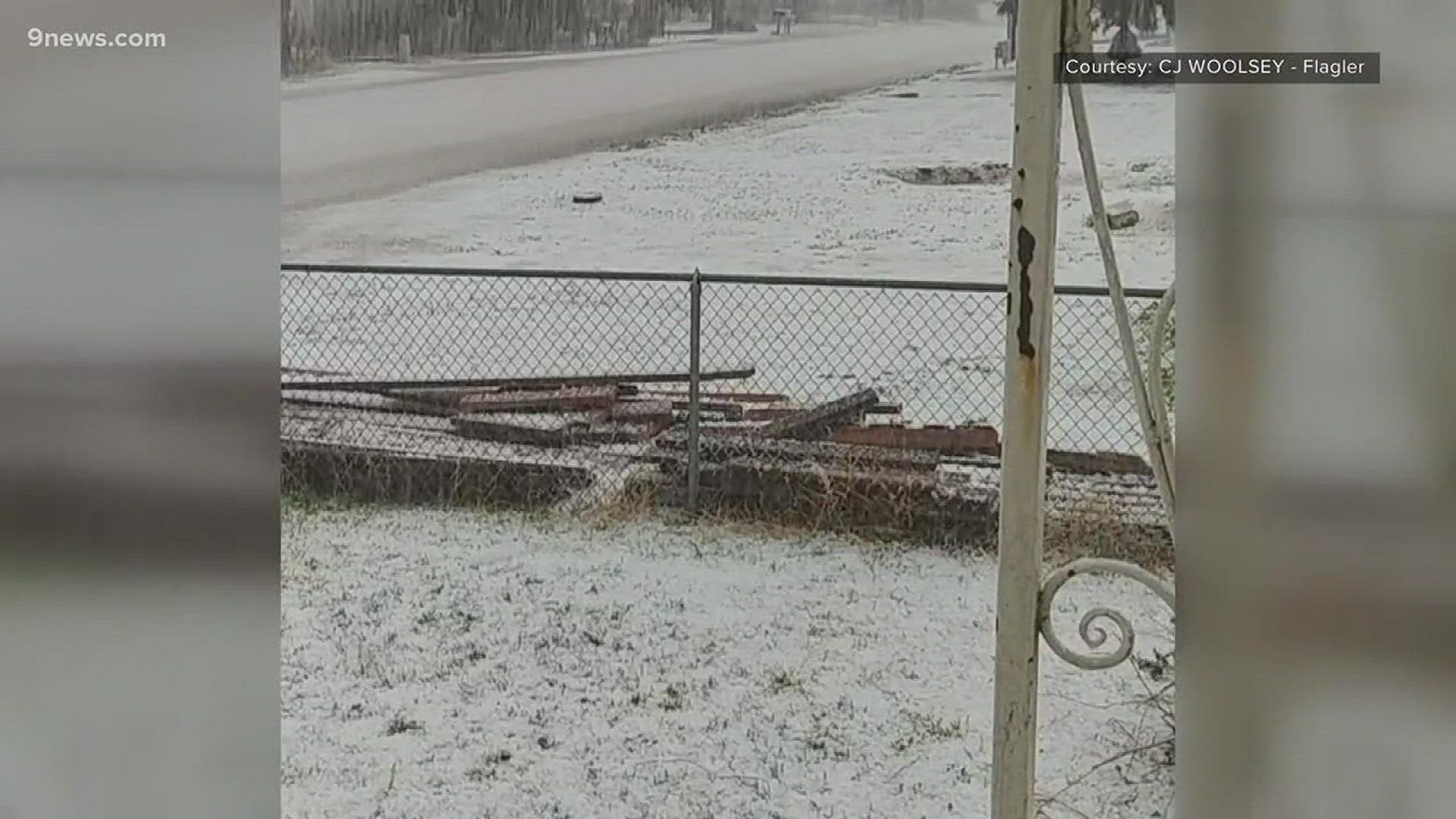COLORADO, USA — Hailstones hammered parts of Colorado on Easter Sunday, from Estes Park to DIA.
There was even severe golf ball-sized hail reported on the eastern plains near Flagler.
Here's a guide to everything you need to know about hail and hail season in Colorado.
What is Severe Hail?
Severe hail is large enough to regularly cause damage to cars or roofs.
The standard is any hailstone one inch in diameter or larger. That is the size of a quarter. Hail smaller than one inch can cause damage but it is not common.
A Severe Thunderstorm Warning is usually issued when a storm becomes capable of producing one-inch hail.
The Hail Capital
Kansas is the Hail State, but the Colorado Front Range is usually called the Hail Capitol because the Colorado Springs to Denver metro area gets more severe hail events than anywhere else in the county with an average of 13 per year.
Hail falls faster and hits harder in Colorado compared to lower elevations. A one-inch hailstone that hits the ground at 50 mph at sea level, hits at 54 mph in Denver. That can potentially lead to greater damage in the Mile High City.
Accumulating or Plowable Hail
Accumulating hail is also common in Colorado. Three to four inches of hail fell in Flagler on Sunday, but we’ve been known to get more than a foot of small hail on occasion.
A Severe Thunderstorm Warning can be issued for accumulating hail even though the size of the stones is usually smaller than one inch. Sometimes called plowable hail, it creates low visibility and slippery roads leading to very dangerous driving conditions.
The National Weather Service says Colorado can get between 10 and 20 plowable hail events every year. So Easter Sunday was likely just the first of many.
Although Colorado can get any type of hail at any time during the spring and summer, historically, accumulating hail strikes most between April 15 and June 20, while the hail tends to get larger with the bigger thunderstorm updrafts of the Summer. Colorado will frequently get hailstorms through the end of September.
Big Hail
Hail can get big in Colorado, although documented cases are nowhere near the size of many other state records.
The Colorado state record is 4.5 inches, the size of a grapefruit. That size has been verified here 20 times, the last time being July of 2011, in Adams County.
SUGGESTED VIDEOS | Science is cool

